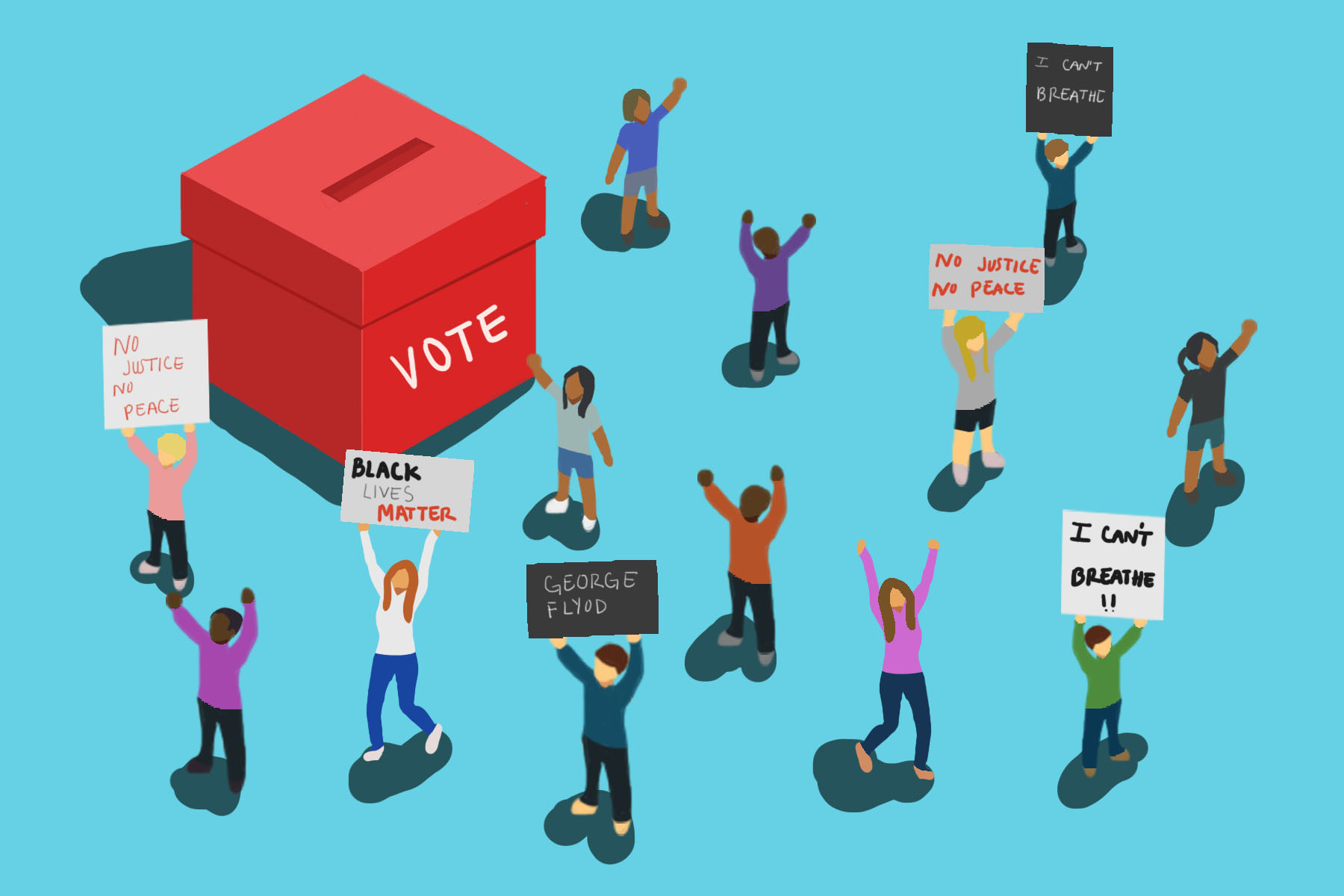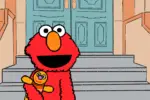Though Americans do not vote for president for another three months, political action is nonetheless at a fever pitch. On June 3, tens of thousands of marchers filled several San Francisco streets to march against police brutality. Just over a week after the murder of George Floyd, locals were energized to take up the cause of racial justice. The march dominated news headlines; its size and scope captivated a nation.
Seventeen-year-old Simone Jacques was the primary organizer of the Bay Area protest; the rising high school senior belongs to the activist group NoJusticeNoPeaceSF. Just before the march, Jacques gave a rousing speech in which she was careful to tell the crowd to wear masks and refrain from vandalizing small businesses.
On the other side of the country, Kerrigan Williams and Jacqueline LaBayne were also making their mark on the anti-police brutality movement in Washington D.C. The two young adults coordinated a sit-in under the banner of Freedom Fighters DC at Capitol Hill. A diverse coalition of around 500 people showed up. Just three days later, Williams and LaBayne led a march from the Capitol to the White House, where they were joined by roughly 2,000. Williams knew George Floyd personally as the two hail from the same Houston community.
It is no secret that young people have been a major presence within the movement against police brutality. Their youthful exuberance and sense of justice has propelled them to take to the streets and fight for a righteous cause. Whether they realize or not, young demonstrators follow in the footsteps of protest movements like Occupy Wall Street and Fight for $15 — both of which have also played a tremendous role in shifting American political discourse. As laudable as that is, some question whether this energy will extend to other areas of political activity.
On June 11, the AP ran the headline “Young people turned out to protest. Now, will they vote?” NPR echoed this sentiment with an article titled “Young Activists Pour Energy Into Protests, But What About The Election?” Even Al Jazeera joined in, asking “Youth in US protested by the thousands, but will they vote?”
While some may roll their eyes at the somewhat patronizing tone, these outlets pose an important question. But before attempting to answer it, we must examine the assumptions upon which the question is based. Namely, the idea that young people are unreliable voters.
It is easy to take the truthfulness of this claim, which has become a sort of conventional political wisdom, for granted. And there is a lot of evidence backing it up. For example, voter turnout for 18 to 29-year-olds in the 2016 presidential election was a mere 46.1% — nearly 12 points below the national average. As little as 0.44% more turnout could have been enough to swing the race in favor of Secretary Clinton.
But that number has been roughly the same since 1980. Sure, there have been dips and bumps along the way — only 39.6% of 18 to 29-year-olds showed up to vote in 1996, while 52% showed up just four years earlier. However, these fluctuations largely reflect turnout trends in the country at large. Since 1980, the average turnout for the young demographic in presidential elections is 46.4% — just 0.3% above what it was in 2016.
So, the current crop of young people is not particularly averse to voting. But it would be understandable if they were.
For many of them, the Obama administration was the first presidency they remember well. Of course, Barack Obama will go down in history for being the first Black president. But what is his legacy from a policy perspective?
Appointing Sonia Sotomayor, the first Latina Supreme Court justice who was also instrumental in passing marriage equality, was a great achievement. As was signing and negotiating the Iran Nuclear Deal, which has since been torn up. These (and other) Obama-era wins ought to be celebrated, and credit should be given where it is due. That said, Obama’s tenure is forever marred by a long line of broken promises.
Take the issue of health care, for instance. Obama campaigned on passing a “universal healthcare bill” by the end of his first term. His stated goal was to provide health insurance to all Americans, free at the point of entry. Thanks in large part to Bernie Sanders, this policy is now known by the catchy name Medicare for All.
But, of course, we never got Medicare for All. Instead, despite supermajorities in the House and Senate, Obama gave us the Affordable Care Act (ACA). In many respects, the ACA was a huge gift to the insurance industry as it forced people into private marketplaces with the threat of fines. Obama made sure, on numerous occasions, to credit the ultraconservative Heritage Foundation for inspiring the bill.
And while the ACA did significantly bring down the number of uninsured Americans, it is a far cry from Medicare for All. The ACA still left nearly half of all American adults underinsured or without insurance altogether. Moreover, a study published by The Lancet found that Medicare for All would save more than 68,000 lives annually compared to the ACA.
Health care is just one example of a broken Obama promise. He also said he would close down the Guantanamo Bay military prison and restore habeas corpus rights for “enemy combatants,” which he never did. And despite championing a pathway to citizenship for undocumented immigrants on the campaign trail, Obama earned the moniker of “Deporter in Chief” for his hawkish stance on immigration.
In other words, Barack Obama promised “Hope and Change” that, in many respects, never really materialized. The disappointments of the Obama administration formed the foundation of the political consciousness of an entire generation. This likely contributes to why, in the last year of Obama’s presidency, only 22% of young adults had “a great deal or quite a lot” of trust in the federal government.
After Obama came Trump, who was awarded the presidency despite losing the popular election by about 3 million votes — a stark reminder that the electoral college effectively disenfranchises a huge number of voters. Considering an anti-democratic election and a litany of broken promises, it is easy to see why some young people might be disillusioned by electoralism. But there is hope.
Young voters will come to the polls when convinced that doing so is not just going to bring about more of the same. That would be easy to do if Bernie Sanders were atop the Democratic ticket considering his popularity with younger voters but will be much harder with Joe Biden there instead.
Though polls appear encouraging, a lot can change between now and November. A Biden victory will likely require shoring up the youth vote. And if they want young voters to turn out, Team Biden will need to give them something to vote for. That means promising, with the intention of delivering, the progressive change that stirs the passions of so many young people in this country. The Biden-Sanders Unity Task Force is a good first step toward that end.

















